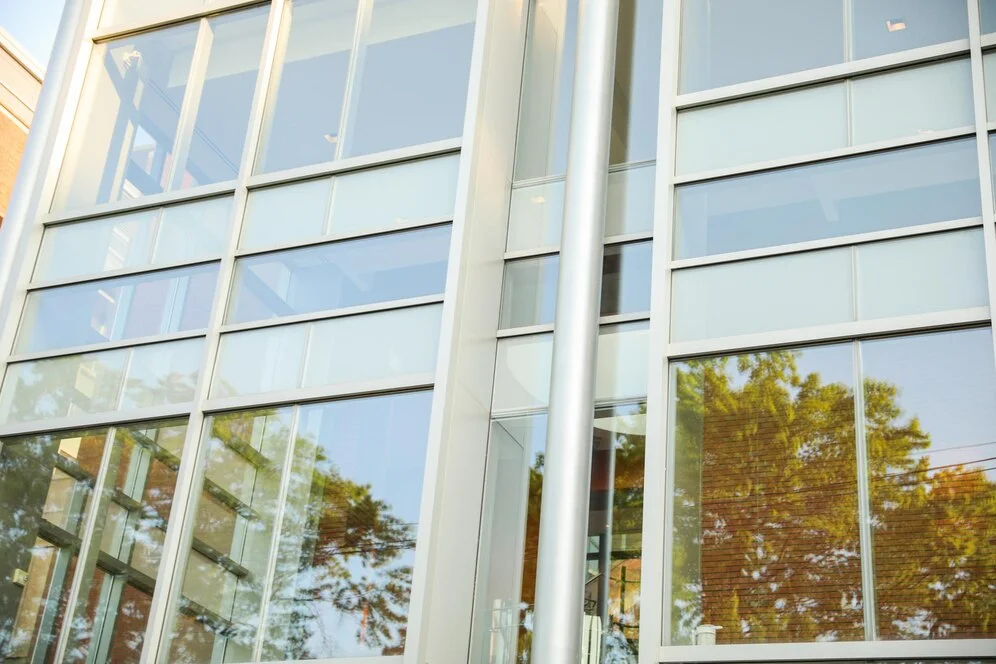HVAC systems often account for more than 40% of total energy consumption in commercial buildings, making them one of the most significant operational expenses. While mechanical upgrades are common, many projects overlook a critical factor that affects HVAC efficiency: energy-efficient commercial windows. Windows’ poor thermal performance allows unwanted heat gain or loss, forcing HVAC systems to operate under higher loads and extended runtimes. This leads to increased energy use, faster equipment wear, and higher utility costs. This article examines how energy-efficient commercial windows reduce pressure on HVAC systems by improving insulation, minimizing air leakage, and stabilizing indoor temperatures. You’ll find practical insights into the technologies behind high-performance windows, financial impacts, and how to select the right solution for your building’s needs. The relationship between energy-efficient commercial windows and HVAC system performance HVAC systems are designed to manage internal climate conditions. However, even the most efficient equipment is forced to overcompensate when a building’s envelope fails to insulate properly. Windows are one of the primary points of thermal transfer in any structure. Poorly specified or outdated window systems allow heat to escape during winter and infiltrate during summer, placing continuous strain on heating and cooling units. This leads to higher energy consumption, uneven temperature control across zones, accelerated wear on HVAC components, and more frequent maintenance interventions. In some commercial properties, uncontrolled solar gain through single-pane windows can increase room temperature by several degrees, requiring constant cooling to maintain acceptable indoor conditions. Energy-efficient commercial windows are engineered to address these issues through advanced glazing, thermal breaks, and airtight sealing systems. Unlike standard windows, they significantly reduce heat transfer and infiltration, allowing HVAC systems to operate at optimal capacity with less cycling and energy waste. This directly improves the building’s energy performance and helps stabilize the interior comfort level, especially in high-occupancy or large-footprint facilities. Another critical advantage is load reduction. When minimizing thermal losses, HVAC system sizing can be adjusted accordingly, reducing equipment and operating costs. This is relevant in retrofits or new constructions where right-sizing mechanical systems based on accurate envelope performance translates to real savings. By reducing thermal exchange at one of the building’s most vulnerable points, energy-efficient commercial windows become a foundational strategy in achieving cost-effective, high-performance HVAC design. How energy-efficient commercial windows work The performance of energy-efficient commercial windows depends on how well their components work together to reduce heat transfer, prevent air leakage, and maintain interior comfort. These systems are engineered to create a physical and thermal barrier between the interior and exterior environments, reducing the load on HVAC systems and increasing energy stability throughout the building. Here are the main features that define how these energy-efficient commercial windows operate: Low-E (Low-Emissivity) glass Low-E coatings are microscopically thin layers of metallic oxide applied to glass surfaces. These coatings reflect infrared radiation while allowing visible light to pass through. As a result, indoor heat is retained during winter, and solar heat is blocked during summer. This selective control of heat flow improves thermal comfort and reduces HVAC demand. Double or triple glazing Insulated glazing units (IGUs) use two or three layers of glass separated by air or gas-filled spaces. These gaps, often filled with inert gases like argon or krypton, reduce conduction and convection between inside and outside air. This configuration minimizes temperature fluctuations, supporting consistent indoor conditions and lower system runtimes. Thermal breaks In aluminum-framed windows, thermal breaks are non-conductive barriers inserted between the interior and exterior sections of the frame. These barriers prevent heat transfer through the metal, increasing the window’s insulating value. Without thermal breaks, aluminum systems lose energy rapidly, even when paired with high-performance glass. High-quality sealing and spacers The seals around window edges and the spacers between glazing layers are responsible for airtightness. Advanced sealing systems prevent infiltration of air, moisture, and pollutants, factors that degrade energy performance and comfort. Warm-edge spacers reduce thermal bridging around the perimeter of the glazing unit. These elements allow energy-efficient commercial windows to perform reliably across various climate conditions and building types. They reduce artificial heating and cooling, provide more stable interior temperatures, and extend the life of mechanical equipment by lowering usage intensity. Effective window systems rely on the synergy of multiple components, not a single feature. The combination of smart glazing, thermal management, and airtight construction makes energy-efficient commercial windows a practical investment in long-term performance. Financial benefits of reducing HVAC load Energy costs in commercial buildings are a long-term operational liability. HVAC systems, often responsible for over 40% of total energy use, represent a major opportunity for optimization. When energy-efficient commercial windows reduce thermal transfer and air leakage, HVAC equipment cycles less frequently and with lower intensity, leading to measurable savings. Reduced utility costs By minimizing heat gain in summer and heat loss in winter, high-performance windows reduce the energy required to maintain target indoor temperatures. Over the course of a year, this can translate into 10–20% lower HVAC-related utility expenses, depending on climate zone and building type. In retrofit projects, payback periods for upgraded window systems often fall within 5 to 7 years. Lower equipment stress and maintenance When HVAC systems operate under reduced load, components last longer and require fewer interventions. Less frequent cycling reduces wear on compressors, blowers, and control systems, delaying costly repairs and replacements. Over a 10-year period, buildings with energy-efficient commercial windows can reduce HVAC-related maintenance demands due to lower equipment strain and extended system lifespan, leading to significant cost savings over time. Tax incentives and certifications Federal and state programs provide financial incentives for buildings that improve energy performance. These may include tax credits, performance rebates, and accelerated depreciation benefits for energy-efficient upgrades. Installing certified window systems often contributes directly to LEED points or compliance with ENERGY STAR® benchmarking. Improved asset value and marketability Buildings with lower operating costs and higher energy efficiency attract tenants, command higher lease rates, and have more substantial resale potential. Windows are a visible, specifiable element that supports green certifications and ESG reporting. Across the building’s lifecycle, energy-efficient commercial windows

